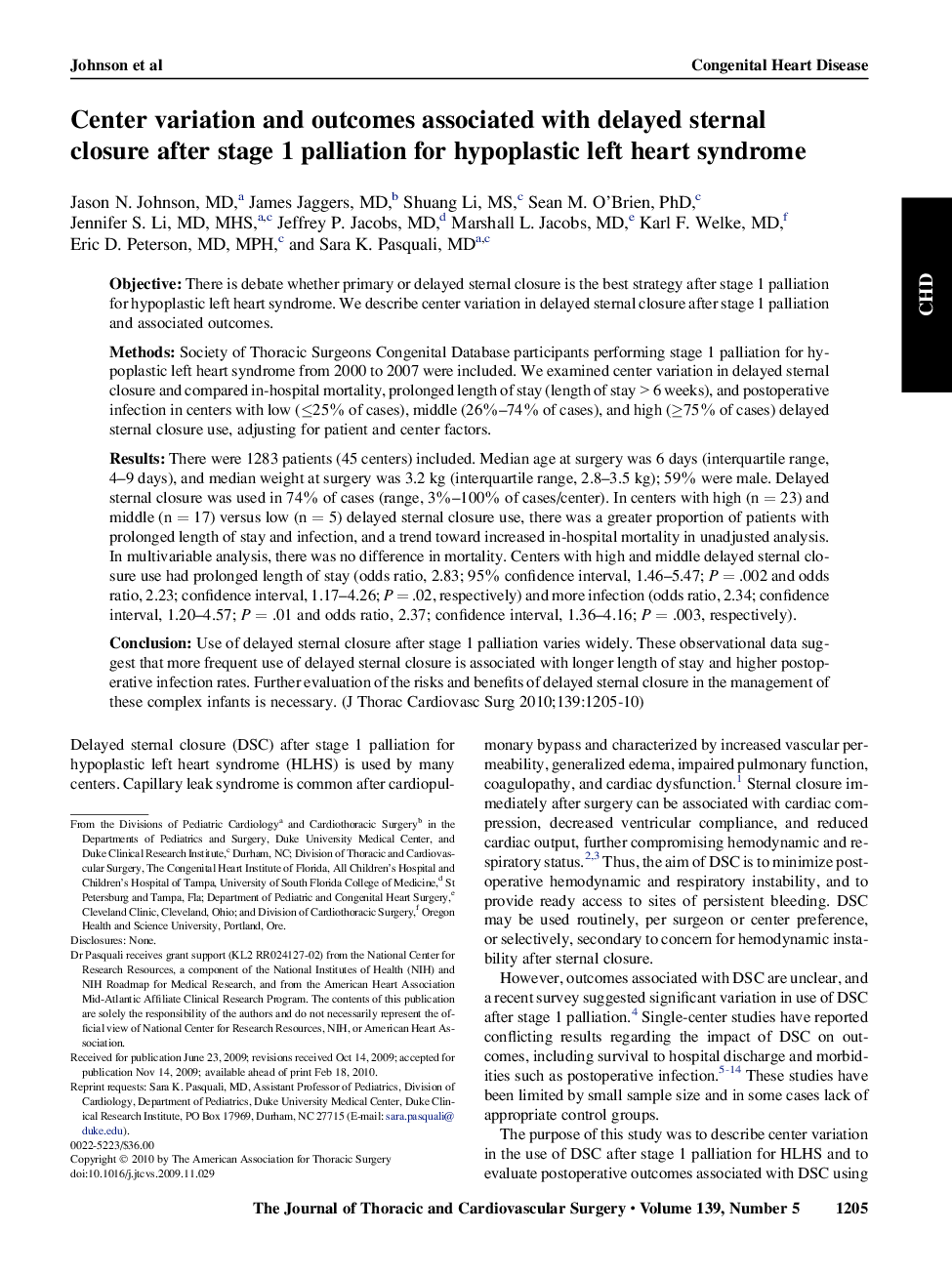| کد مقاله | کد نشریه | سال انتشار | مقاله انگلیسی | نسخه تمام متن |
|---|---|---|---|---|
| 2983999 | 1578662 | 2010 | 6 صفحه PDF | دانلود رایگان |

ObjectiveThere is debate whether primary or delayed sternal closure is the best strategy after stage 1 palliation for hypoplastic left heart syndrome. We describe center variation in delayed sternal closure after stage 1 palliation and associated outcomes.MethodsSociety of Thoracic Surgeons Congenital Database participants performing stage 1 palliation for hypoplastic left heart syndrome from 2000 to 2007 were included. We examined center variation in delayed sternal closure and compared in-hospital mortality, prolonged length of stay (length of stay > 6 weeks), and postoperative infection in centers with low (≤25% of cases), middle (26%–74% of cases), and high (≥75% of cases) delayed sternal closure use, adjusting for patient and center factors.ResultsThere were 1283 patients (45 centers) included. Median age at surgery was 6 days (interquartile range, 4–9 days), and median weight at surgery was 3.2 kg (interquartile range, 2.8–3.5 kg); 59% were male. Delayed sternal closure was used in 74% of cases (range, 3%–100% of cases/center). In centers with high (n = 23) and middle (n = 17) versus low (n = 5) delayed sternal closure use, there was a greater proportion of patients with prolonged length of stay and infection, and a trend toward increased in-hospital mortality in unadjusted analysis. In multivariable analysis, there was no difference in mortality. Centers with high and middle delayed sternal closure use had prolonged length of stay (odds ratio, 2.83; 95% confidence interval, 1.46–5.47; P = .002 and odds ratio, 2.23; confidence interval, 1.17–4.26; P = .02, respectively) and more infection (odds ratio, 2.34; confidence interval, 1.20–4.57; P = .01 and odds ratio, 2.37; confidence interval, 1.36–4.16; P = .003, respectively).ConclusionUse of delayed sternal closure after stage 1 palliation varies widely. These observational data suggest that more frequent use of delayed sternal closure is associated with longer length of stay and higher postoperative infection rates. Further evaluation of the risks and benefits of delayed sternal closure in the management of these complex infants is necessary.
Journal: The Journal of Thoracic and Cardiovascular Surgery - Volume 139, Issue 5, May 2010, Pages 1205–1210